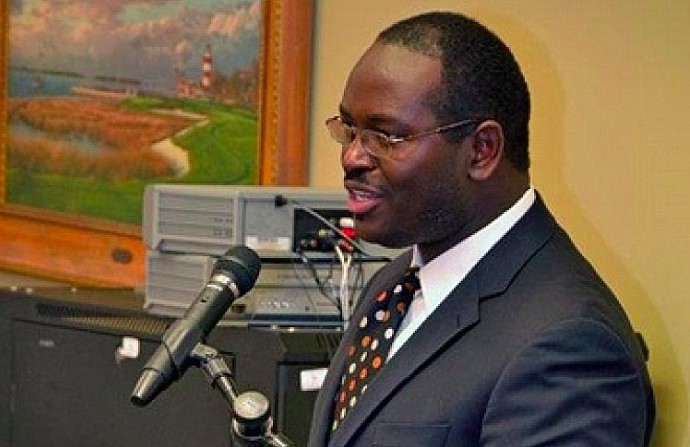Clementa Pinckney, the South Carolina state senator and pastor of Charleston’s Emanuel AME Church who was one of nine people executed there last night, is being remembered as the “moral conscience of the General Assembly.” The church that he has pastored since 2010 is, as President Obama put it earlier today, “more than a church.” It is “a place of worship that was founded by African Americans seeking liberty” and “a sacred place in the history of Charleston and in the history of America.”
Yet, as Obama noted, Emanuel, like other black churches, has been the target of violence, not just last night, but throughout its history. In an excellent essay at TPM, Benjamin Park writes about how black churches have long “served as a flashpoint for hatred from those who fear black solidarity, and as a result these edifices have been the location for many of our nation’s most egregious racial terrorist acts.” In 1822, one of Emanuel’s founders, Denmark Vesey, was one of 35 black men hanged after “white residents of Charleston discovered that one of their worst fears had come true: a slave conspiracy to rise against their masters and slaughter all white residents was afoot in the city.” The church building was also burned to the ground.
After last night’s murders, a YouTube user named Michael Adams has uploaded an undated video of Pinckney giving a floor speech in the South Carolina legislature about the murder of Walter Scott, who was gunned down by a police officer in North Charleston on April 4, just one day after the suspected Emanuel shooter, Dylann Roof, reportedly received a gun as a 21st birthday gift from his father.
Pinckney was speaking in support of body cameras for police officers, as the only reason we know what happened to Walter Scott is because a bystander filmed it with his phone. In making his plea, Pinckney invoked the biblical story of Doubting Thomas, the one of Jesus’s disciples who would not believe Jesus had risen from the dead until he saw him with his own eyes and touched his wounds with his own hands. “It was only when he was able to do that, he said, ‘I believe,'” Pinckney said of Thomas.
Some people, said Pinckney, are like Thomas when it came to Scott. Those doubting Thomases, he said, would say:
there is no way a police officer would shoot somebody in the back, six, seven, eight times. But like Thomas, when we were able to see the video, and we were able to see the gunshots, and when we saw him fall to the ground, and when we saw the police officer come and handcuff him on the ground, without even trying to resuscitate him, without even seeing if he was really alive, without calling an ambulance, without calling for help, and to see him die face down on the ground as if he were gunned down like game. I believe we were all like Thomas, and said, “we believe.”
As Reuters reports, the suspected shooter’s Facebook profile shows him wearing patches of the flags of apartheid-era South Africa and Rhodesia and sitting on a car with a license plate bearing the words “Confederate States of America.” He reportedly said, after sitting for an hour next to Pinckney and other worshippers at Emanuel, and after shooting them, and after a worshipper attempted to talk him out of reloading his gun, “I have to do it. You rape our women and you’re taking over our country. And you have to go.”
There couldn’t be clearer evidence of not just derangement, not just a crazed loner, not just an evil assassin, but of the basest, most naked racism. Yet I’m sure there will be the doubting Thomases of what motivated the murderer of Pinckney and his fellow worshipers. There will be those who pin it on evil or mental illness but will balk at naming terrorism or racism. They will be reluctant to talk about South Carolina’s abiding affection for the Confederacy, not just on Dylann Roof’s Facebook page but at the state capital, where the Confederate flag still flies, and in museums where secession is treated as an essential part of the state’s history, and sanitized as disassociated from anything having to do with race or slavery.
In his floor speech, Pinckney referred to the body cameras as “new eyes for seeing” for the doubting Thomases. No doubt he keenly understood how those new eyes are needed metaphorically as well, something that, tragically, will require repeating as we seek to understand and explain why he and eight others were targeted and gunned down as they prayed.


